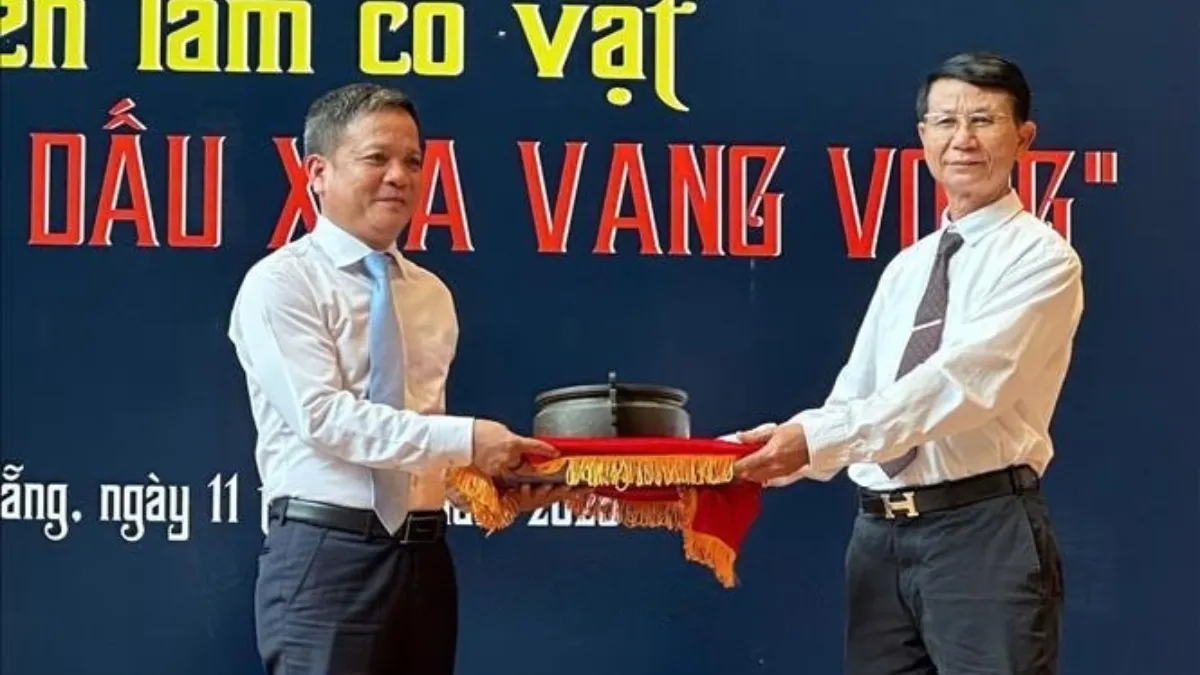A new exhibition at the Da Nang Museum of History in central Vietnam has opened its doors, showcasing a remarkable collection of ancient artifacts that offer a glimpse into the region’s rich cultural heritage. The display, which began this month, features rare items spanning centuries, from intricately carved stone relics to delicate bronze tools, drawing attention to Vietnam’s historical depth and the city’s role as a cultural hub. With Da Nang increasingly recognized as a tourist destination, this exhibition underscores the city’s commitment to preserving and sharing its past with both local and international visitors.
A Window into Vietnam’s Ancient Past
The exhibition, housed in the Da Nang Museum of History, presents over 100 artifacts, many of which have been recently unearthed or restored. These items trace the region’s history from the prehistoric era through the Champa Kingdom—a Hindu-Buddhist civilization that flourished in central and southern Vietnam between the 2nd and 17th centuries—to the early Nguyen Dynasty. Among the highlights are stone carvings depicting deities from the Champa period, bronze implements believed to date back over 2,000 years, and ceramic pieces showcasing early Vietnamese craftsmanship.
The museum’s curators have emphasized the significance of these artifacts in understanding the cultural exchanges that shaped the region. Da Nang, strategically located along ancient trade routes, served as a melting pot of influences from across Southeast Asia and beyond. The displayed relics bear traces of Indian, Chinese, and indigenous Vietnamese traditions, reflecting a complex tapestry of historical interactions. This exhibition aims to educate visitors about these connections, offering a tangible link to a past that continues to define the region’s identity.
Preserving Heritage Amid Modern Growth
Da Nang has transformed in recent decades from a quiet coastal town into a bustling urban center and a major tourist destination, often dubbed Vietnam’s most livable city. Its beaches, such as My Khe, and landmarks like the Marble Mountains attract millions of visitors annually. Yet, as the city modernizes, efforts to preserve its cultural heritage have taken on renewed urgency. The Da Nang Museum, established in 2011, plays a pivotal role in these efforts, serving as a repository for artifacts that might otherwise be lost to rapid development or environmental challenges.
The current exhibition is part of a broader initiative by local authorities to highlight the city’s historical significance. By showcasing these rare items, the museum not only educates the public but also fosters a sense of pride among residents. For many locals, the artifacts are a reminder of their ancestors’ ingenuity and resilience, providing a counterbalance to the city’s contemporary image as a hub of tourism and commerce.
A Draw for Cultural Tourism
The timing of the exhibition aligns with Da Nang’s push to diversify its tourism offerings beyond sun and sand. While the city is well-known for its scenic coastline and modern attractions like the Golden Bridge in Ba Na Hills, cultural tourism remains an underexplored niche. The museum’s new display offers an opportunity to attract visitors interested in history and archaeology, complementing nearby UNESCO World Heritage Sites such as Hoi An Ancient Town and the My Son Sanctuary, both of which are tied to the Champa civilization.
Local officials hope the exhibition will encourage longer stays in Da Nang, as tourists combine beach holidays with educational experiences. The museum has also introduced guided tours and interactive displays to engage younger audiences and international visitors, ensuring the artifacts’ stories are accessible to all. Admission to the exhibition is affordable, with tickets priced at 40,000 Vietnamese Dong (~US$1.60), making it an accessible outing for families and budget travelers alike.
Community Engagement and Future Plans
Beyond tourism, the exhibition has sparked interest among local schools and community groups. The museum has partnered with educational institutions to organize workshops and lectures, allowing students to learn directly from historians and archaeologists. These programs aim to instill an appreciation for cultural preservation in the next generation, ensuring that Vietnam’s heritage remains a living part of Da Nang’s identity.
Looking ahead, the museum plans to expand its collection through further excavations and collaborations with international institutions. There are also discussions about digitizing the artifacts to create virtual exhibitions, making them accessible to a global audience. For now, though, the physical display remains the centerpiece of the museum’s efforts to bring history to life.
As visitors wander through the halls of the Da Nang Museum, marveling at relics of a bygone era, they are reminded of the enduring power of culture to connect past and present. For the people of Da Nang, this exhibition is more than a showcase—it is a celebration of their roots, a story told through stone and bronze that continues to resonate today.
















